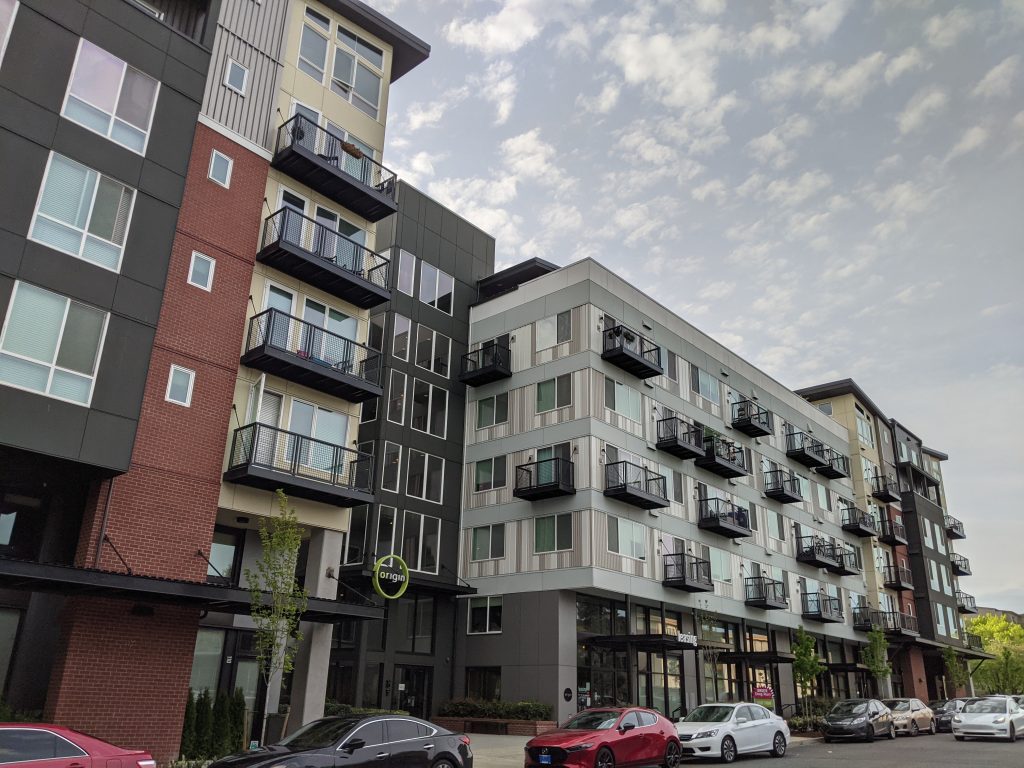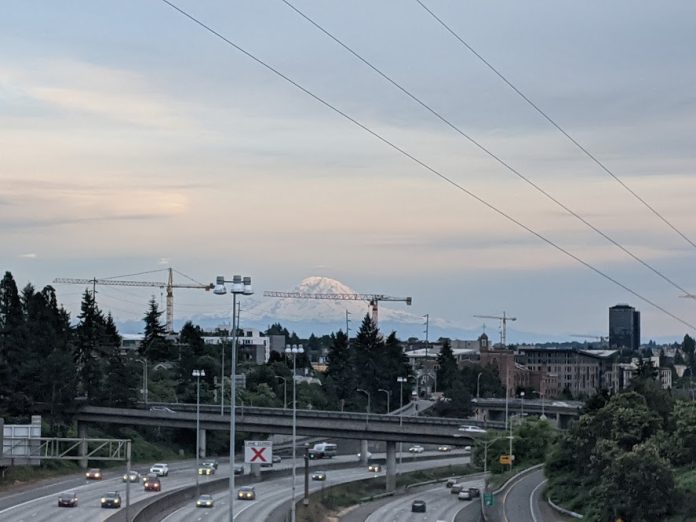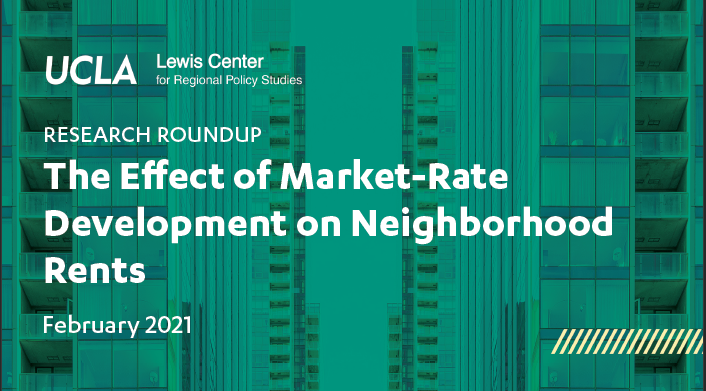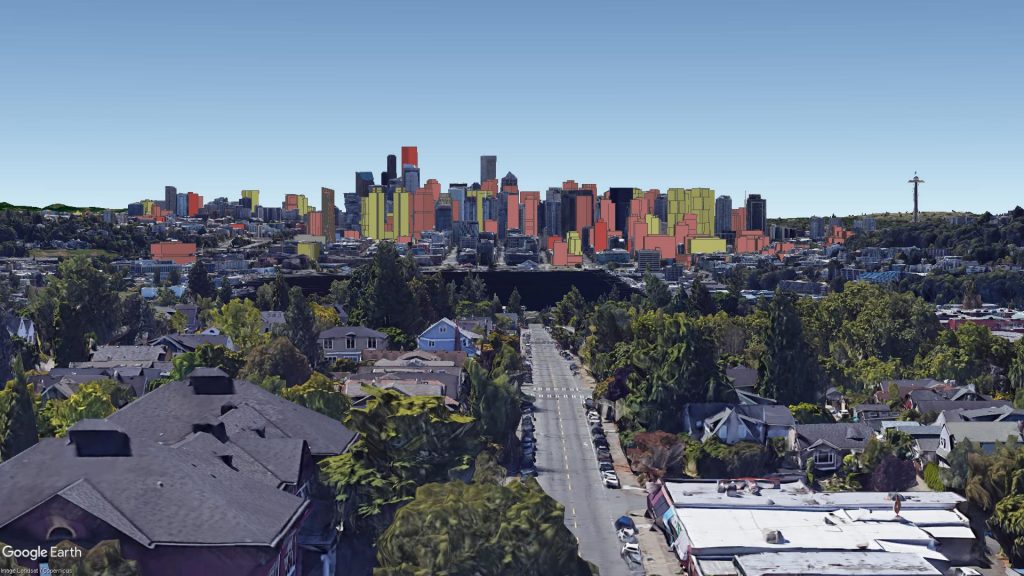Recently, a flurry of studies about the effects of new housing supply has emerged. They rebuff skeptics, who argue against building more housing. In a research roundup, University of California Los Angeles (UCLA) researchers Shane Philips, Michael Manville, and Michael Lens conducted and arranged a review of the new literature. Research Roundup: The Effect of Market-Rate Development on Neighborhood Rents goes over a recent wave of scientific study on the relationship between new market-rate housing and affordability. Early takeaways from the research point toward market-rate housing as a boon toward a locality’s housing affordability.
The research comes as newly available datasets reveal building-level rents over time, and the occasional demographical data. Combining that with statistical analysis helped researchers control for reverse causality. Ultimately, the question that the research is trying to address is about what new market-rate housing does to housing affordability. Two forces are presented; how they measure against each other is the subject of investigation.
On one side are those who think new market-rate units — unsubsidized homes whose price often places them beyond the reach of lower- and middle-income households — make nearby housing more affordable by increasing availability and relieving pressure on the existing housing stock. This is known as the “supply effect.” An opposing view, however, is that new housing only attracts more wealthy households, brings new amenities to the neighborhood (including the housing itself), and sends a signal to existing landlords that they should raise their rents. This “amenity effect” or “demand effect” thus makes housing less affordable.
— Shane Philips, Michael Manville, and Michael Lens
Right off the bat, the roundup’s authors acknowledge that the discussion they’re distilling isn’t about whether or not new housing can reduce housing affordability. They write that there is good consensus that new housing keeps down the prices of housing in high demand regions. However, what is worth further examination is how and why market-rate development affects affordability rather than whether or not affordability is affected.
Addressing Supply Skepticism
The roundup’s authors first ground their writing in a 2018 paper by Vicki Been, Ingrid Gould Ellen, and Katherine O’Regan called Supply Skepticism: Housing Supply and Affordability. The researchers sought to address the growing concerns and advocacy that seek to defeat development on the basis of preserving housing affordability. Notable groups question the premise that increasing supply of market-rate housing will improve housing affordability. Concerned by the lack of serious interrogation of this skepticism, the authors contribute a survey of existing literature that addresses the concerns of supply skeptics. Been, Ellen, and O’Regan offer sincere responses to seemingly plausible but dangerous arguments presented by skeptics.
Supply skeptic arguments and the author’s responses include:
- Supply skeptic argument one: Land used in many high-cost market-rate housing will come at the expense of affordable homes. In other words, supply and demand break down with housing because housing is tied to a specific plot of land. Plus, land is a limited resource and should be used for more affordable units. An extreme example that skeptics would point to as wasted use of land is vacant luxury homes.
- To approach this argument, the authors of Supply Skepticism present literature that found that in a constrained market like land, supply of housing does increase and that prices generally fall in response. They bring up high intensity of use for housing (density) to address the concerns about land as a limited resource. The authors also discuss the lack of an assurance that land would be used for affordable housing if it wasn’t occupied by market-rate housing — land being too costly for affordable housing and the high cost of affordable housing are brought up as examples to why other uses might outcompete for the land.
- Inclusionary zoning is presented as a middle ground to ensure that some land is used for affordable units.
- Supply skeptic argument two: Adding supply at the top end will do little or nothing to alleviate affordability challenges in lower-priced markets. Of high concern to skeptics is luxury housing, which they find problematic because skeptics think that building at one price point doesn’t affect prices of housing in another price category.
- Here the authors refer to literature that shows housing filtering up and down into different price points. They find substantial fractions of affordable housing units have filtered down from moderate and high cost housing markets due to aging and tenure conversion — often owner-occupied to rental. Study in markets that are less responsive to housing demand found a higher likelihood of affordable units filtering up to less affordable housing submarkets, so not building housing to meet demand will make affordable units become less affordable.
- The authors also emphasize that even though there is down filtering, it doesn’t mean housing needs are being addressed for all price points. This leaves plenty of room to argue for publicly funded below market-rate housing.
- Supply skeptic argument three: Induced demand, cost decreases will instantly be offset by new demand triggered by lower costs. This argument is analogous to how widening highways or building new highways doesn’t ease traffic, long-term, because new capacity will increase demand and not improve traffic conditions.
- While the authors do find evidence to reinforce induced demand for highways, the logic doesn’t transfer smoothly to housing. They cite literature that points to lower and decreasing mobility of housing compared to driving. The researchers do concede there being a limited induced demand, but the effect doesn’t cancel out affordability benefits from more and sufficient supply increases. While it doesn’t prove causation, the authors do highlight all the empirical evidence that shows more supply leading to lower house prices, which does crack this hypothesis by supply skeptics.
- Supply skeptic argument four: New housing increases rent and triggers displacement in immediate neighborhoods. This line of argument is what the roundup is most concerned with, as they consider the demand effect with the effect of new amenities — retail and improved aesthetics.
- Here the authors take pause as little empirical evidence existed when inspecting the supply effect in 2018. If anything, they found limited theory and evidence backing skeptical thinking, but they caution that it may not prove a causal relationship. Some study has found that even subsidized low-income development in blighted areas can sometimes increase surrounding property value, this is caveated as new housing replacing disamenities like vacant homes and littered lots.
How the latest literature stacks up
After a foray into supply skepticism, the roundup examines six working papers released in 2019 or 2020. While these papers are still awaiting peer review, they provide a near unanimous view to back up the conventional wisdom that new market-rate housing supply makes housing more affordable. Only one of the six provides mixed results and offers some reasoning to why new market-rate housing might make nearby housing more expensive.
Seemingly aware of the environment it’s publishing in, the first paper in its introduction clearly states that, “If there is an endogenous amenity effect, it appears to be overwhelmed by the standard supply effect.” The 2019 paper, Supply shock versus demand shock: The local effects of new housing in low-income areas by Brian Asquith, Evan Mast, and Davin Reed, analyses the impact of large market-rate rental developments on nearby rents in low-income census tracts. With data spanning 11 cities and tens of thousands of units, the authors find that rents within 250 meters of new development fall by 5% to 7% compared to rents in buildings 250 to 600 meters away.

In the roundup’s next 2019 paper, Evan Mast goes on his own to establish a migration chain within 700 market-rate multifamily developments. Mast’s paper, The effect of new market-rate housing construction on the low-income housing market, found that there is a chain of people moving into new housing, someone else moving into their old home, and so forth. This creates a cycle where slack is created in the lower-end housing market. He found the effect taking place within five years. It also provides evidence to counter the induced demand arguments presented in Supply Skepticism by noting that 67% of movers were from the same metro area, which means new housing isn’t instantly all swallowed up by outside demand. Filtering is also backed up by this study by showing how migration initiates the process where aging homes can start to fall down the pricing submarkets with cycling ownership. This of course isn’t to say that new market-rate housing will solve an affordability crisis alone; five years is not an acceptable timeframe to solve a housing crisis. Plus, housing production would need to be sufficiently robust and sustained to reach a broad swath of the population, and some extremely low-income households may never be able to afford market-rate rents.
The next three studies — Does building new housing cause displacement?: The supply and demand effects of construction in San Francisco by Kate Pennington, Do new housing units in your backyard raise your rents by Xiaodi Li, and The impact of new housing supply on the distribution of rents by Andres Mense — all also find decreasing rents in neighborhoods and cities where new market-rate developments are completed. Pennington’s study also found risk of displacement falling by 17.1% within 100 meters of a development site. Additionally, both Pennington’s and Li’s study observe evidence of a demand effect with increases residential renovations, business turnover, and restaurant openings. Despite an existing demand effect, both of those studies found that increased supply still resulted in decreasing rents — though for Li’s study, rent declines for low-rent buildings were not statistically significant.
Of particular interest to the rest of the roundup is Anthony Damiano and Chris Frenier’s 2020 paper, Building baby build?: Housing submarkets and the effects of new construction on existing rents, that found rents rising on average 6.6% in less expensive Minneapolis buildings when development happened within 300 meters. On the other hand, rents lowered by 3.2% in more expensive buildings. Initial reaction to that finding was controversy due to incongruent class effects. However, the roundup’s authors are quick to note that Damiano and Frenier’s study doesn’t adjust for inflation — a fault that may be refined out with peer review — which would find that real rents grew only by 0.2% for lower market housings — similar to Li’s study. Nevertheless, class differences remain as real rents for middle- and high-market housing decreased by 5.3% and 12.2% respectively. The other studies don’t subdivide the housing market like this one does. Though in a different paper by Mense, new development did make rents fall for cheaper housing stock.
Takeaways
At the end of the roundup, the authors make sure to emphasize that new and additional market-rate housing is not a panacea for rising housing costs. That’s clear from the small percentages that rent does decrease when new development does come. They instead present their evidence to support the argument that market-rate housing should complement rather than undermine other housing affordability strategies like subsidies, inclusionary zoning, and affordable housing construction. The authors also voice concern over problematic development that either reduces housing supply, displaces low-income households in exchange for a modest increase in housing supply, or over-saturates development in low-income and vulnerable communities.
Gentrification, the authors argue, should be addressed with evenly distributed development and varying degrees of government intervention based on demand. Los Angeles’ Echo Lake is elevated as an example of gentrification despite the little housing development that has happened with housing inventory only increasing 10% between 1970 and 2018. The fixed amount of housing was eventually picked off by those that had more money.
Temporarily discarding housing costs, demand effect and supply effect both seem good for our urban environment. More amenities mean more local land uses, and less need for cars. The opposite happens in low-housing supply areas, where negative environmental effects are exasperated. Gentrification despite no housing supply changes further income and racial/ethnic segregation. There’s also evidence that supply restriction limits economic growth. We just have to make high-demand areas more affordable.
Reflecting on how Seattle’s housing market is behaving, it’s clear that the city has rapidly increasing housing costs. More vulnerable areas in Seattle are also disproportionality burdened by urban village designations and therefore development. To combat local gentrification and rising housing costs, both private and public sectors should have a hand in increasing housing supply with market-rate, social, and subsidized housing solutions. Zoning laws should also be updated to allow for more uniform development of the city, as to prevent further entrenchment of wealthy alcoves and provide relief to marginalized communities.
This conclusion isn’t anything new, this research confirms long-held planning and economic theory, but it’s good to have research and urbanist advocacy lined up. Having more nuance and a more robust body of literature on new housing and affordability is not only critical to counter dangerous and misguided supply skepticism, but it also helps guide policymakers on how to set housing policy equitability and effectively. The last thing cities should do is force market-rate and affordable builders into fierce competition by severely constricting the sites that they allow to be developed, which only drives up land and housing costs while resulting in less housing for everyone.
Shaun Kuo is a junior editor at The Urbanist and a recent graduate from the UW Tacoma Master of Arts in Community Planning. He is a urban planner at the Puget Sound Regional Council and a Seattle native that has lived in Wallingford, Northgate, and Lake Forest Park. He enjoys exploring the city by bus and foot.








